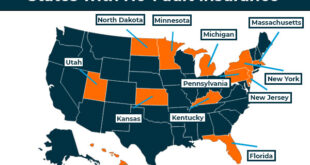Personal Loan for Emergency: Secure Financial Relief Emergencies often strike when we least expect them, leaving us in urgent need of financial assistance. A personal loan for emergency situations can provide the funds you need quickly and efficiently. This guide explains everything you need to know about personal loans for emergencies, including their benefits, application process, and how to manage them responsibly.
What Is a Personal Loan for Emergency?
A personal loan for emergency is a type of unsecured loan designed to help individuals cover unforeseen expenses such as medical bills, home repairs, or urgent travel. These loans typically offer quick disbursement and flexible repayment terms, making them a convenient option during crises.
Benefits of Personal Loans for Emergencies
- Fast Approval: Many lenders approve and disburse funds within 24–48 hours.
- No Collateral Needed: Most personal loans are unsecured, meaning you don’t need to pledge assets.
- Flexible Use: Funds can be used for various purposes, unlike specific-purpose loans.
- Fixed Interest Rates: Easier to predict monthly payments.
- Improves Credit Score: Timely repayments can positively impact your credit profile.
When Should You Consider a Personal Loan for Emergency?
Consider taking out a personal loan for emergencies in the following situations:
- Medical Emergencies: When unexpected medical bills strain your finances.
- Home Repairs: For critical fixes such as plumbing or electrical issues.
- Car Repairs: To keep your vehicle functional during emergencies.
- Urgent Travel: For family emergencies requiring immediate travel.
- Debt Consolidation: To manage high-interest debts.
How to Apply for a Personal Loan for Emergency
Follow these steps to apply for a personal loan:
- Assess Your Needs: Calculate the amount you need and ensure it aligns with your repayment capacity.
- Research Lenders: Compare interest rates, terms, and reviews of various lenders.
- Check Your Credit Score: Higher scores increase approval chances and lower interest rates.
- Prepare Documents: Gather identification, proof of income, and other required documents.
- Submit Application: Fill out the lender’s online or in-person application form.
- Review Terms: Carefully read the loan agreement before signing.
- Receive Funds: Once approved, funds are typically disbursed within a few days.
Managing Emergency Loans Responsibly
- Borrow Only What You Need: Avoid over-borrowing to prevent unnecessary debt.
- Stick to a Budget: Ensure you have a repayment plan.
- Set Up Automatic Payments: Minimize the risk of late fees or penalties.
- Monitor Your Loan Terms: Stay informed about interest rate changes or additional charges.
- Communicate With Lenders: Reach out if you face difficulties repaying on time.
Pros and Cons of Emergency Personal Loans
Pros:
- Quick processing.
- Flexible usage.
- Can boost credit score with timely payments.
Cons:
- High interest for low credit scores.
- Potential for debt if mismanaged.
- May include processing fees or prepayment penalties.
Tips for Choosing the Right Emergency Personal Loan
- Compare interest rates from multiple lenders.
- Opt for lenders offering minimal fees.
- Read customer reviews to assess reliability.
- Confirm the lender’s reputation with regulatory authorities.
- Avoid lenders with hidden charges.
10 Tips for Using a Personal Loan for Emergency
- Borrow only as much as needed.
- Create a repayment plan before applying.
- Compare multiple lenders for the best terms.
- Avoid applying with multiple lenders simultaneously to protect your credit score.
- Use a loan calculator to estimate monthly payments.
- Prioritize loans with flexible repayment options.
- Read the fine print for hidden charges.
- Improve your credit score to secure better interest rates.
- Ensure you have a steady income before borrowing.
- Avoid frequent borrowing to prevent financial stress.
10 FAQs About Personal Loans for Emergencies
- What is the typical interest rate for emergency loans?
Interest rates vary but typically range from 5% to 36%, depending on your credit score. - How quickly can I get an emergency loan?
Many lenders disburse funds within 24–48 hours of approval. - Do I need a co-signer for an emergency loan?
Most personal loans don’t require a co-signer, but it may help improve approval chances. - Can I apply with a low credit score?
Yes, but you may face higher interest rates. - Are there any hidden fees in personal loans?
Some lenders may charge origination fees, late fees, or prepayment penalties. - Can I use an emergency loan to pay off credit card debt?
Yes, many borrowers use personal loans for debt consolidation. - What documents do I need for an application?
Typically, identification, proof of income, and bank statements are required. - Is it better to apply online or in person?
Online applications are faster and more convenient. - What happens if I miss a payment?
Missing payments can harm your credit score and incur penalties. - Can I pay off an emergency loan early?
Yes, but check for prepayment penalties in the loan agreement.
Conclusion
Emergencies are unpredictable, but a personal loan for emergency can provide the financial relief you need to navigate them. By carefully assessing your needs, researching lenders, and managing repayments responsibly, you can turn a challenging situation into an opportunity for growth and resilience.
Taking an emergency loan requires careful thought and planning. Ensure you understand the terms and choose a reputable lender. A well-managed personal loan can alleviate stress and provide the support you need during uncertain times.
 Gerbang Finance
Gerbang Finance

